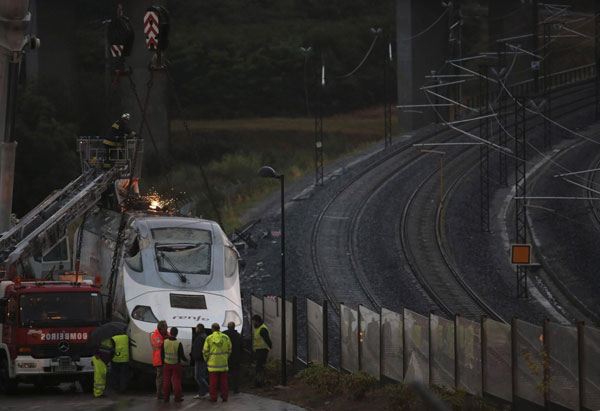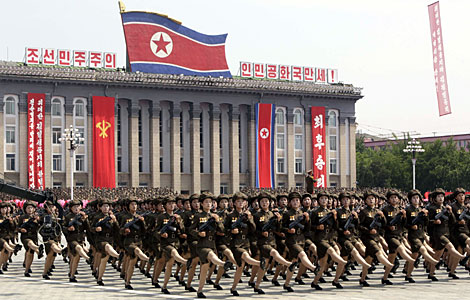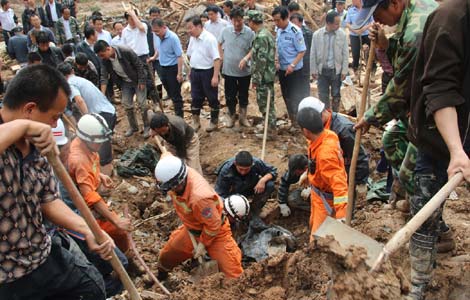
 |
|
A worker performs welding on the wrecked train engine at the site of a train crash in Santiago de Compostela, northwestern Spain, July 28, 2013. Francisco Garzon, 52, the driver of a Spanish train that derailed at high speed on Wednesday in Santiago de Compostela killing 78 people, was released from hospital on Saturday. He remained in police custody ahead of an appearance before a judge to answer questions about what went wrong. [Photo/Agencies] |
The Alvia train involved in the accident, one of three types of high-speed train services that run in Spain, received a full maintenance check on the morning of the journey, the head of Renfe said, and security systems were in good shape.
"As far as we know, the train was in perfect condition when it set off on its journey," Renfe President Julio Gomez-Pomar told newspaper ABC.
The Alvia trains run both on traditional tracks, where drivers must heed warning systems to reduce speed, and on high-speed tracks where a more sophisticated security system will automatically slow down trains that are going too fast.
At the section of the track where the accident happened, it was up to the driver to respond to prompts to slow down.
Gomez-Pomar rejected criticism that the safety system was insufficient, saying the debate "does not make much sense".
Celebrations Canceled
The city of Santiago was meant to be celebrating the yearly festival of St. James on July 25, with thousands of Christian pilgrims arriving after walking the famous Camino de Santiago ancient pilgrimage trail.
A week of concerts and other cultural events were canceled after the train crash on the eve of the festival. On Sunday, black ribbons of mourning hung on the empty stages that had been set up.
Pilgrims, many of them fresh off the trail and carrying backpacks, crammed into a standing-room-only Mass in Santiago's centuries-old cathedral where they were asked to remember the victims of the accident.
At the cathedral gates, along with flowers and candles commemorating the dead, some people left walking sticks from their journeys and others placed shells, the symbol of St. James and badge of honor for the pilgrims who complete the journey.
Prime Minister Mariano Rajoy, who visited the crash site after the tragedy, is due to return on Monday to Santiago, the city where he was born, for an official funeral ceremony for the victims.
Dolores Mato, 57, a shopkeeper who works close to the ancient cathedral, expressed sympathy and grief for the victims and their families, but also for Garzon, who she said had been "crucified" in the media.








